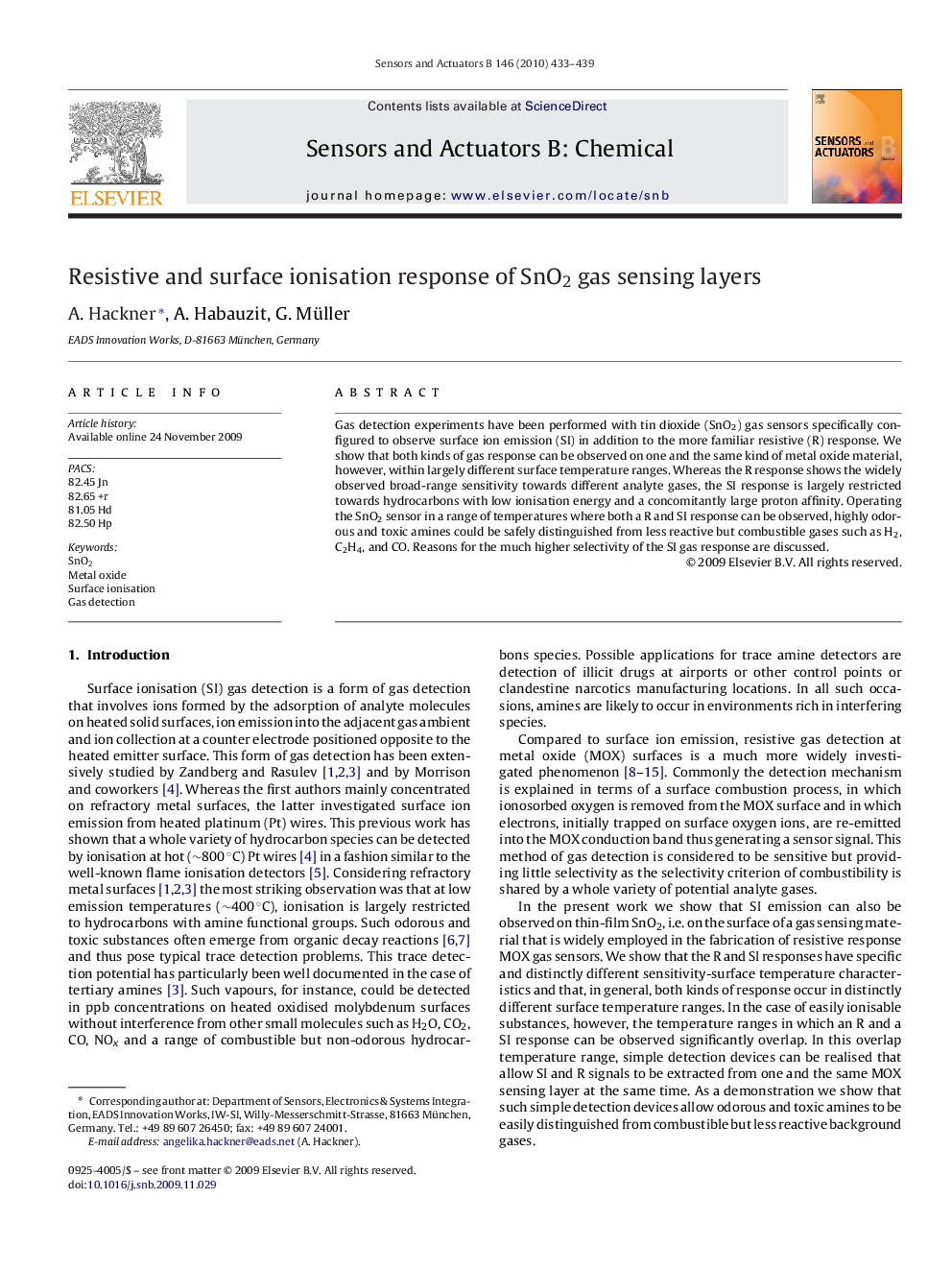| Article ID | Journal | Published Year | Pages | File Type |
|---|---|---|---|---|
| 746054 | Sensors and Actuators B: Chemical | 2010 | 7 Pages |
Gas detection experiments have been performed with tin dioxide (SnO2) gas sensors specifically configured to observe surface ion emission (SI) in addition to the more familiar resistive (R) response. We show that both kinds of gas response can be observed on one and the same kind of metal oxide material, however, within largely different surface temperature ranges. Whereas the R response shows the widely observed broad-range sensitivity towards different analyte gases, the SI response is largely restricted towards hydrocarbons with low ionisation energy and a concomitantly large proton affinity. Operating the SnO2 sensor in a range of temperatures where both a R and SI response can be observed, highly odorous and toxic amines could be safely distinguished from less reactive but combustible gases such as H2, C2H4, and CO. Reasons for the much higher selectivity of the SI gas response are discussed.
